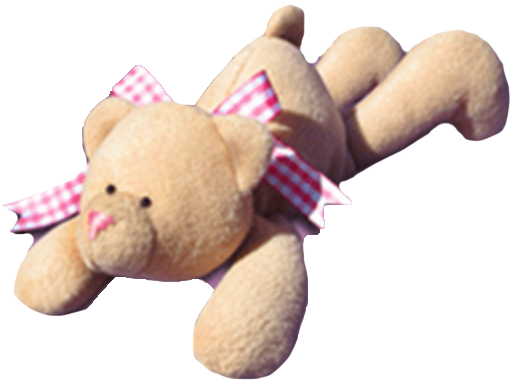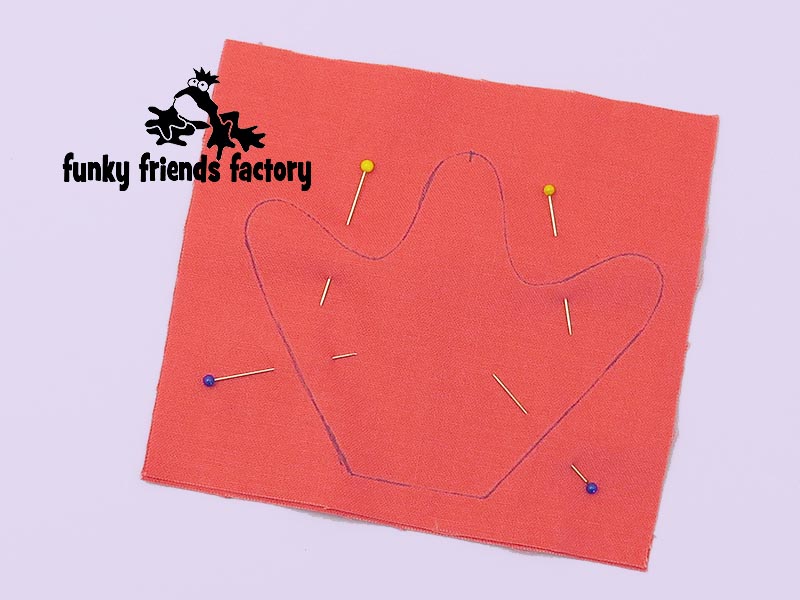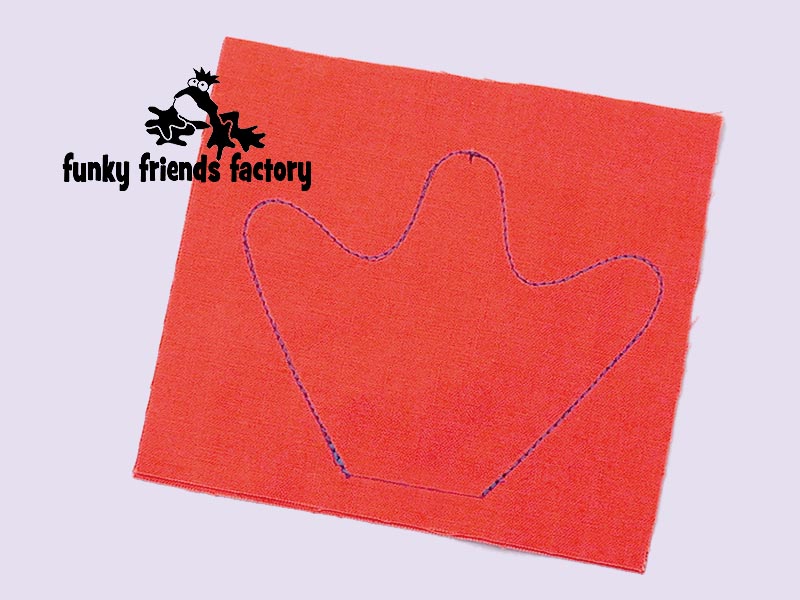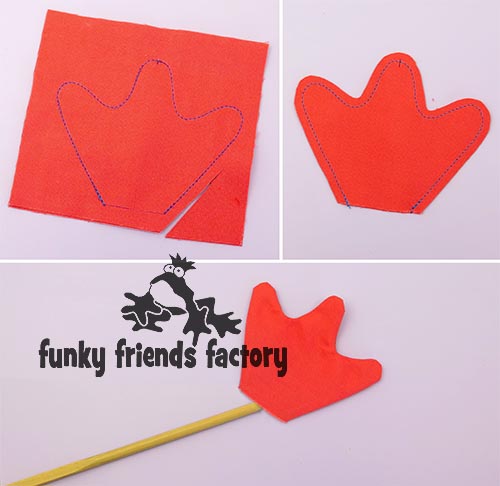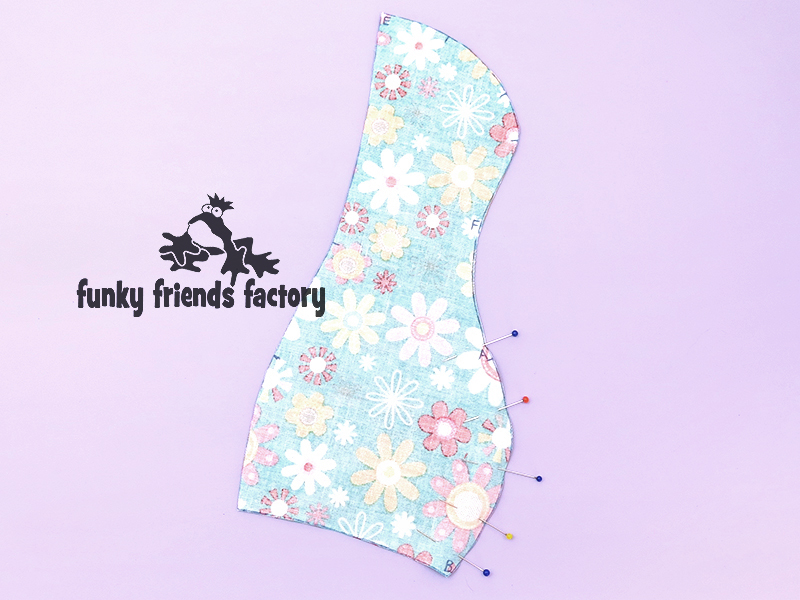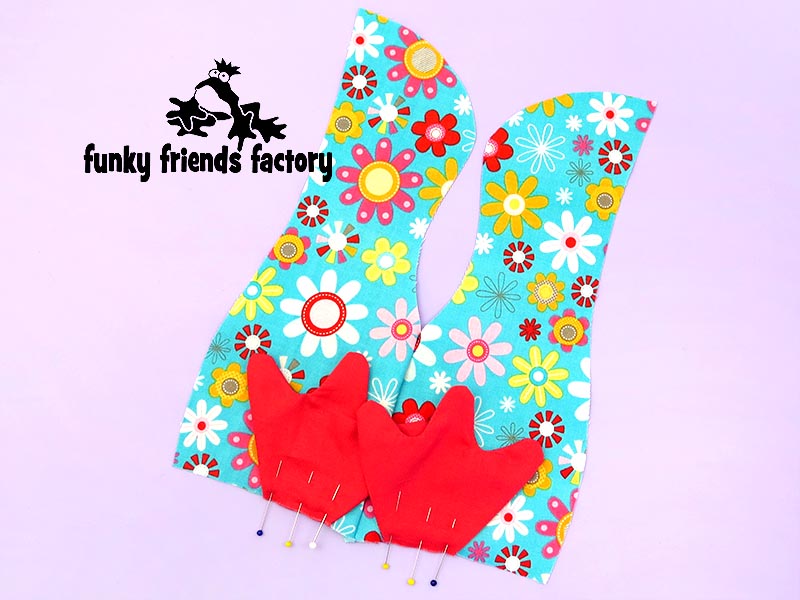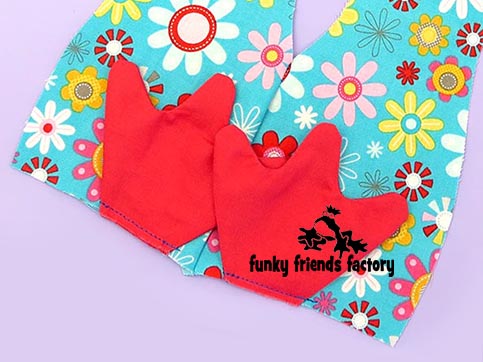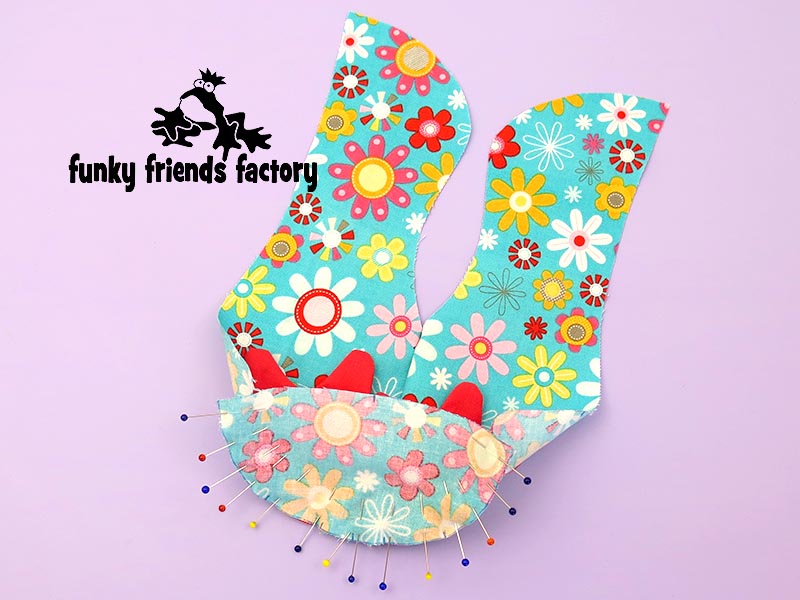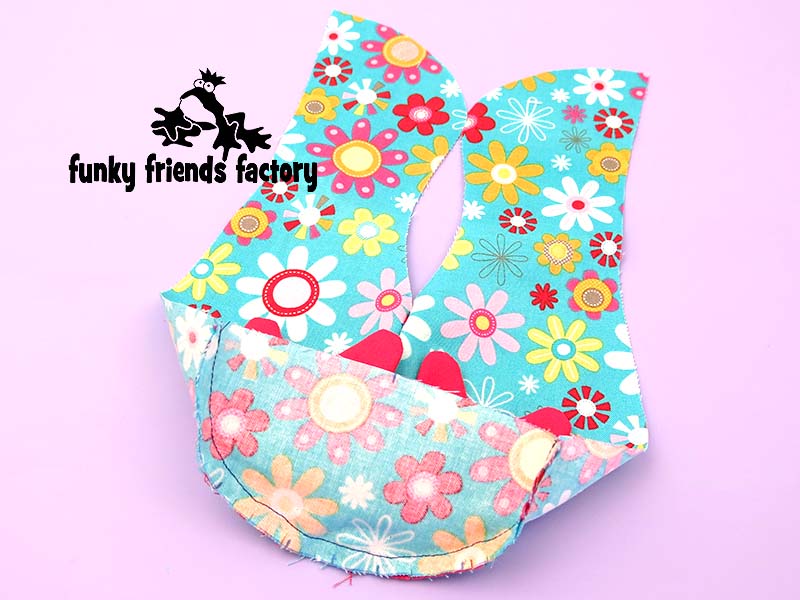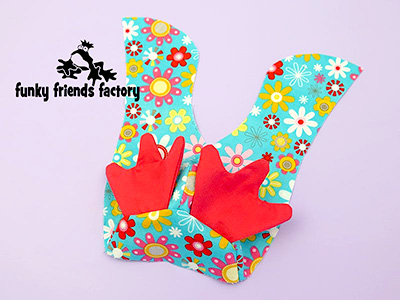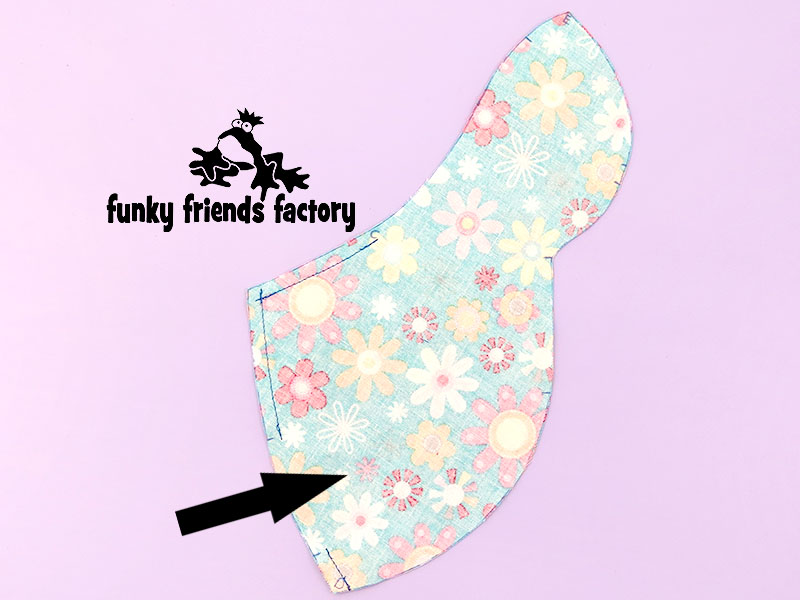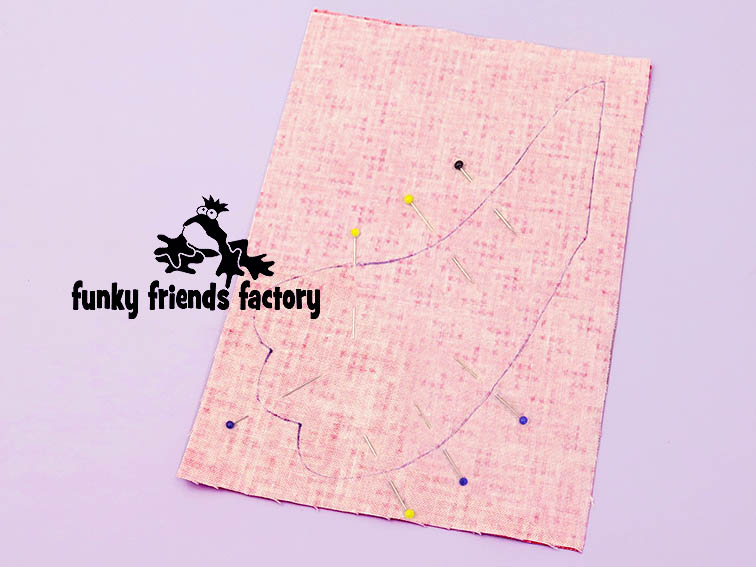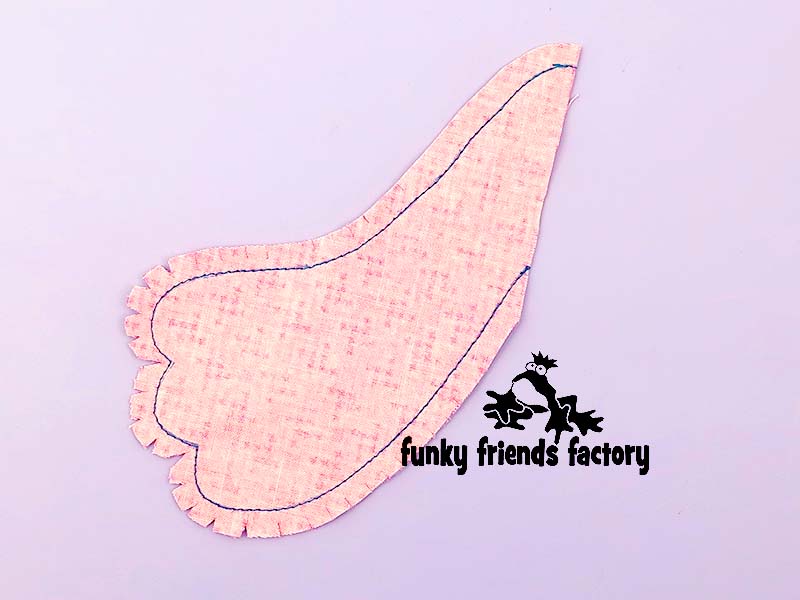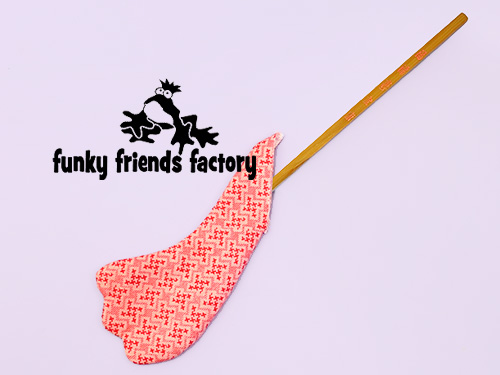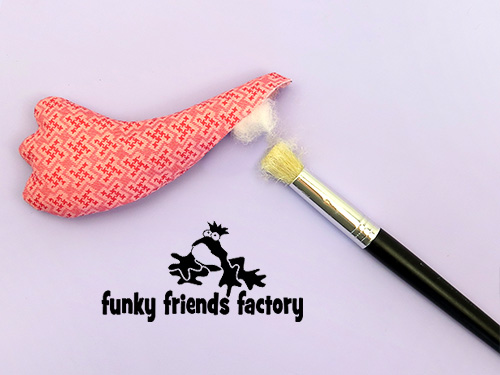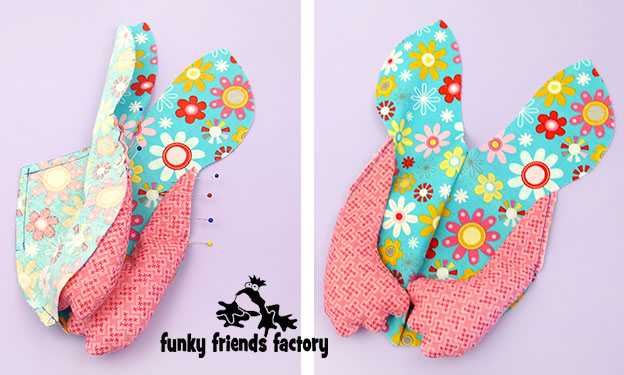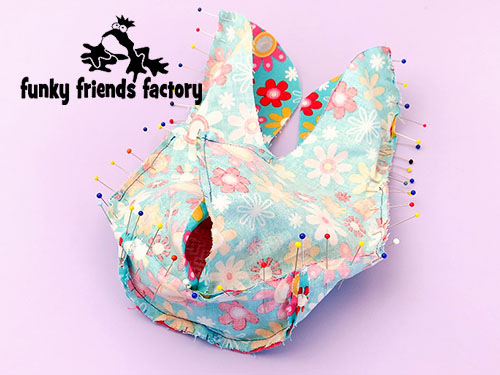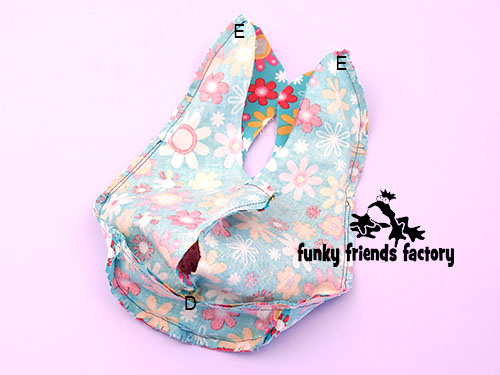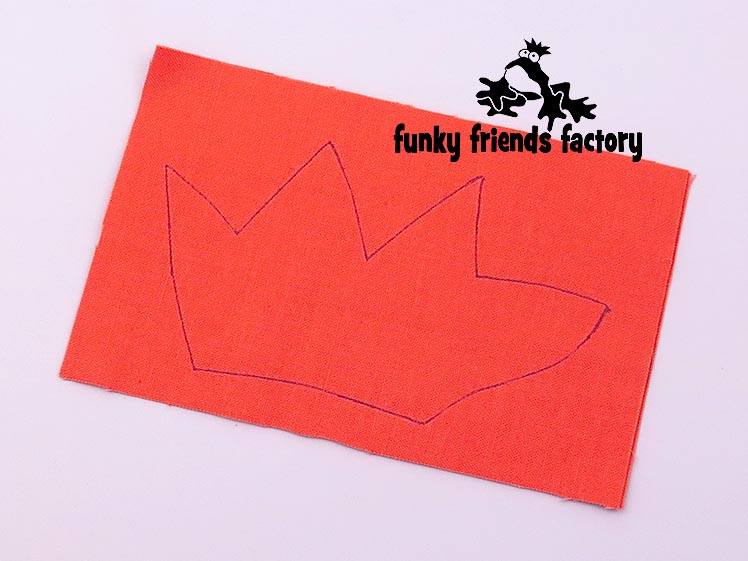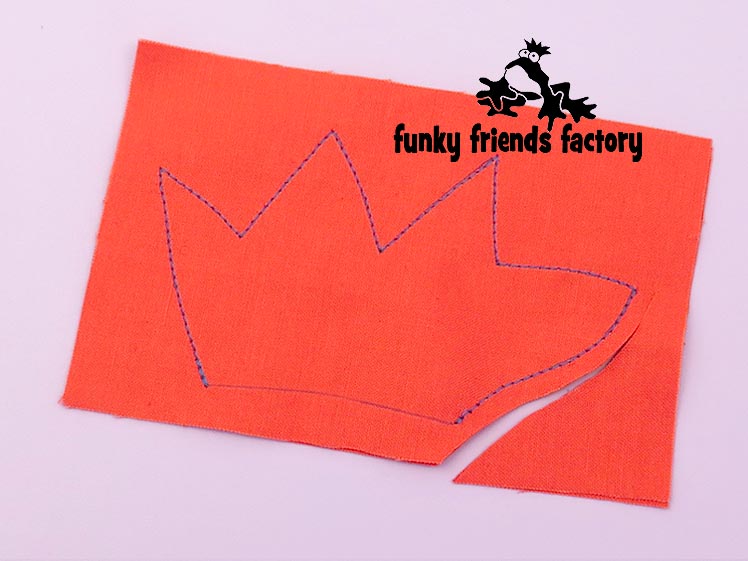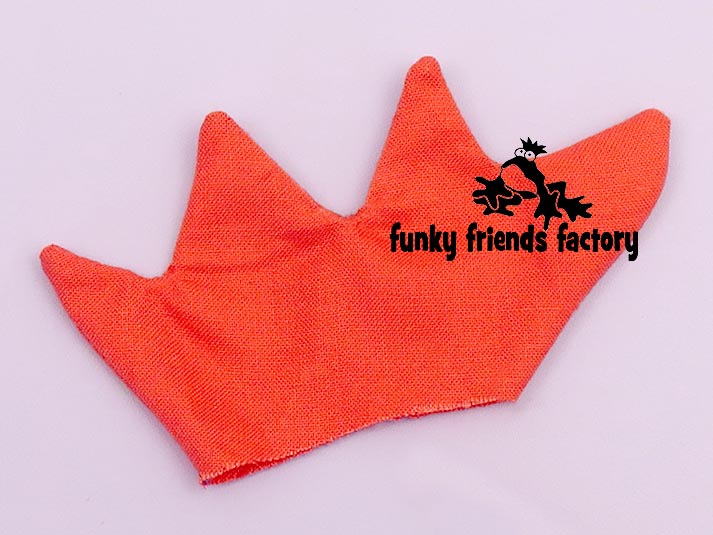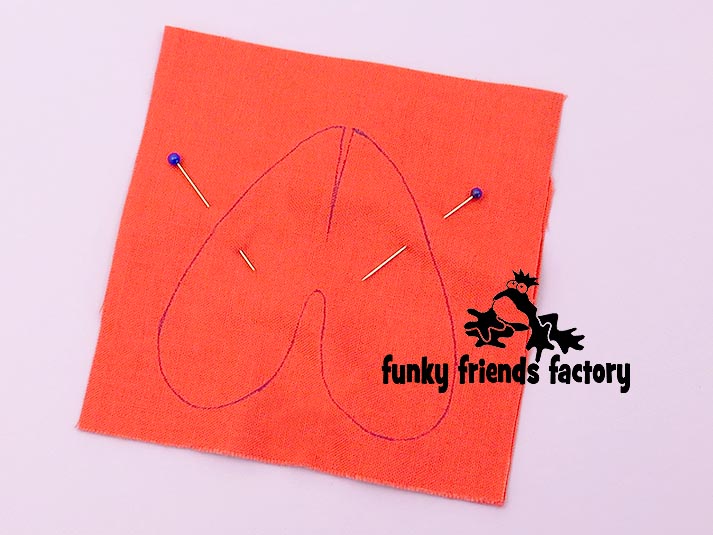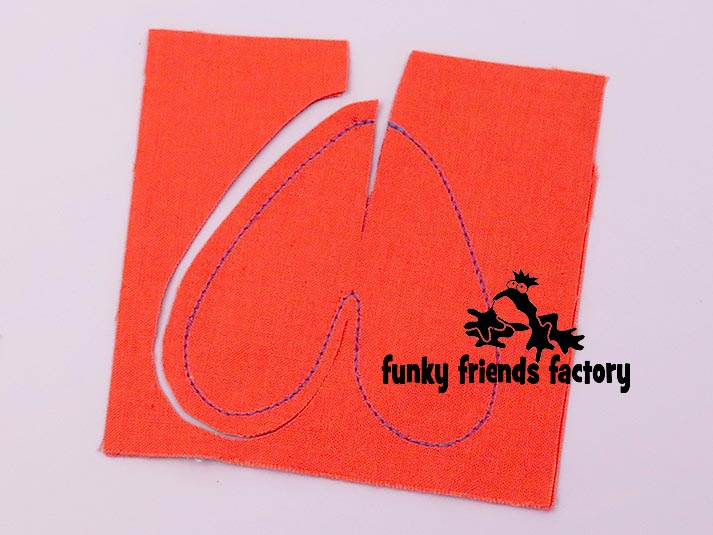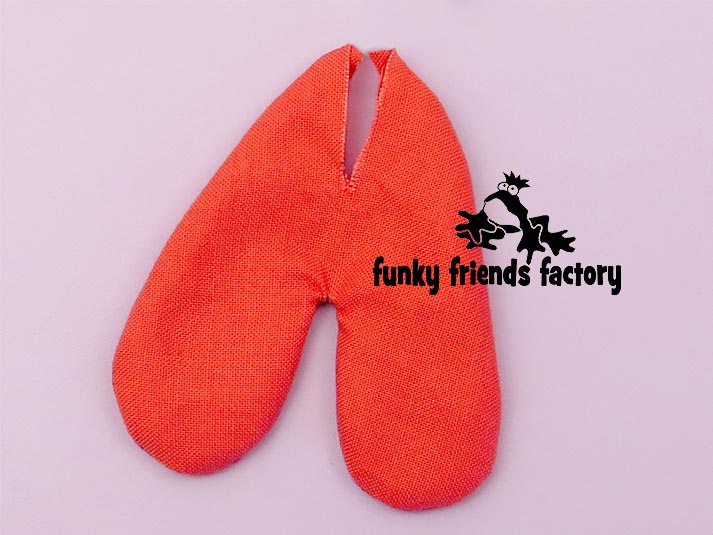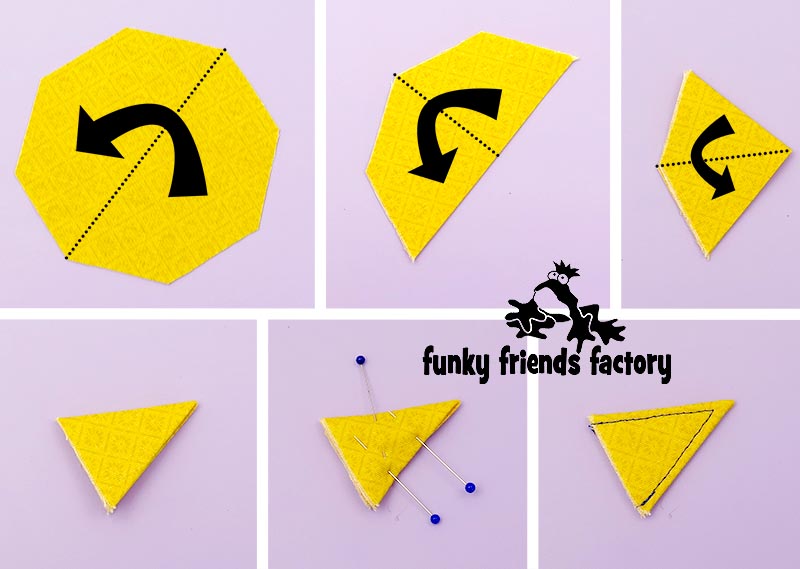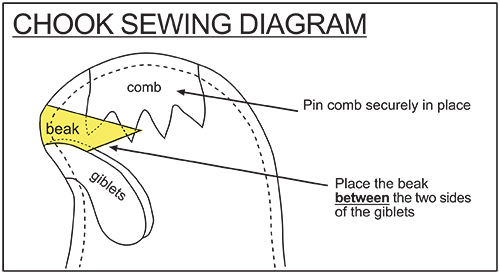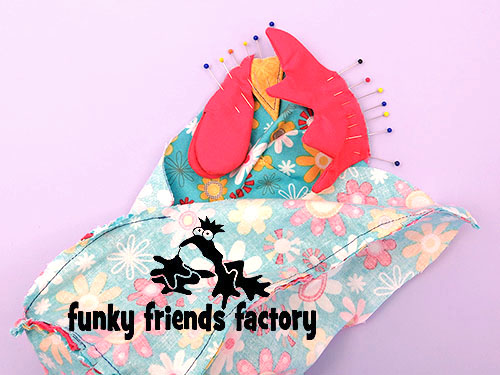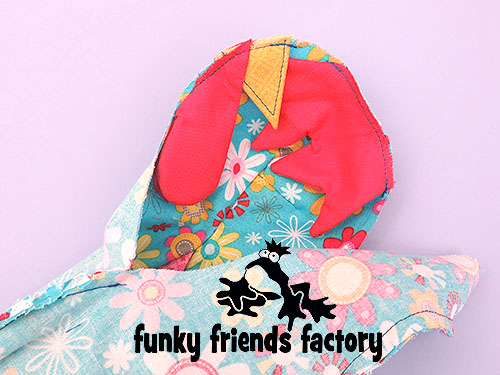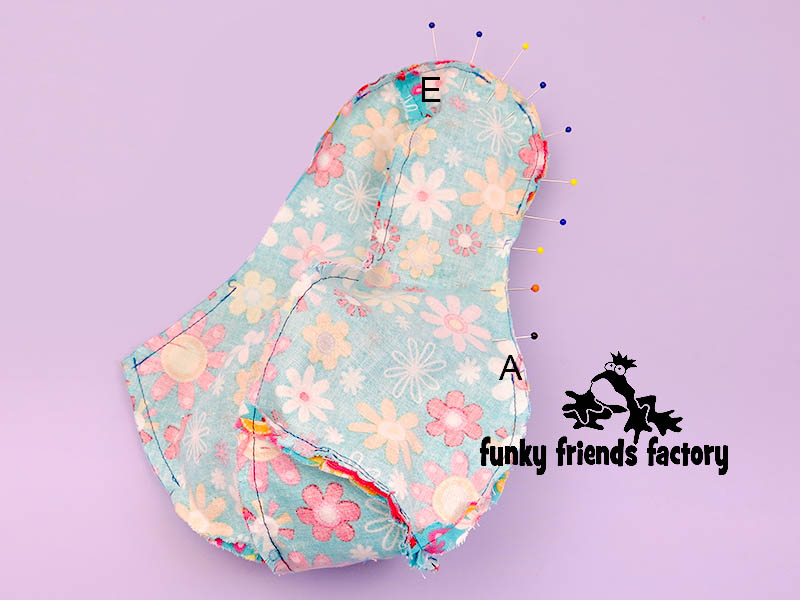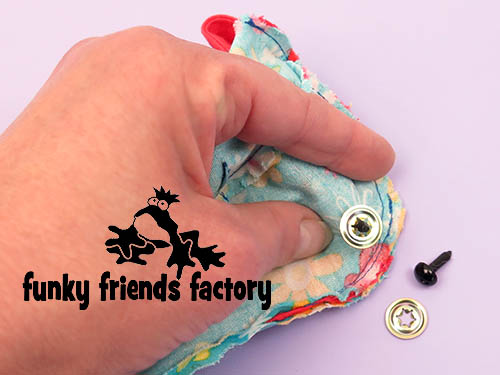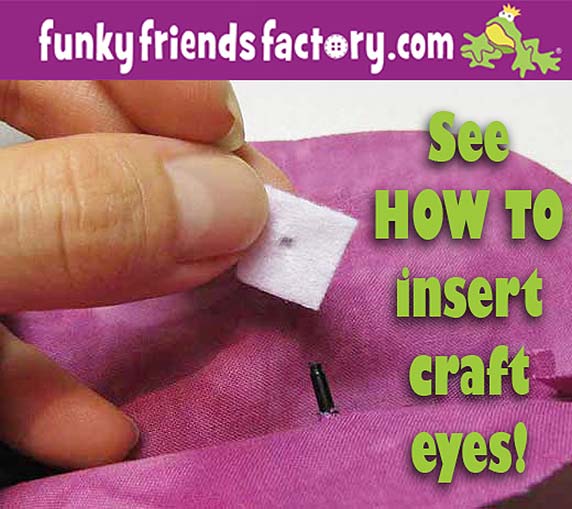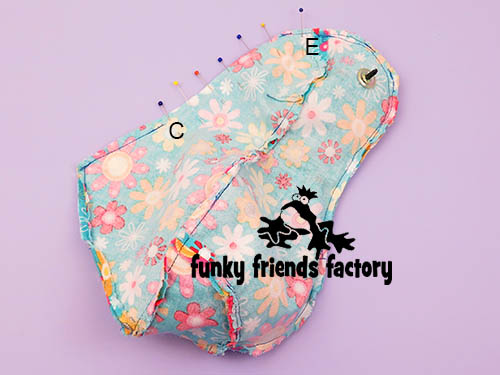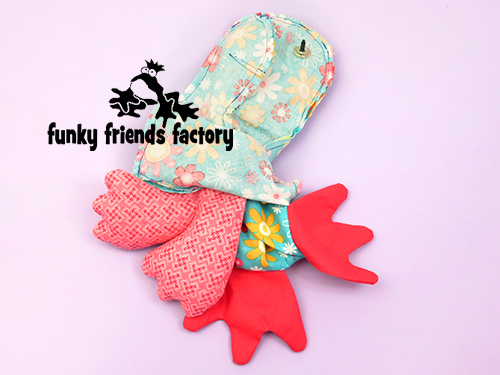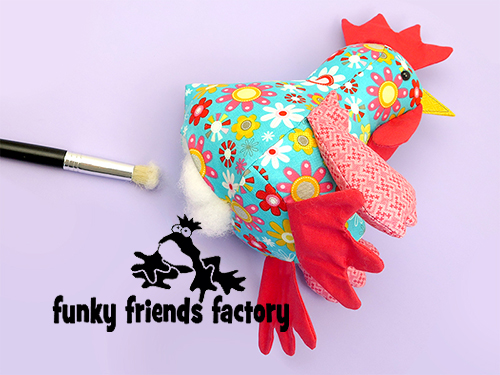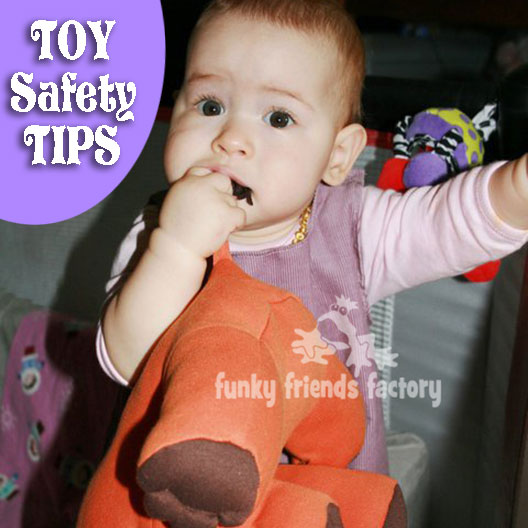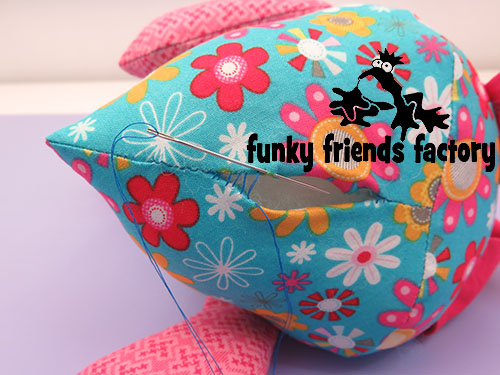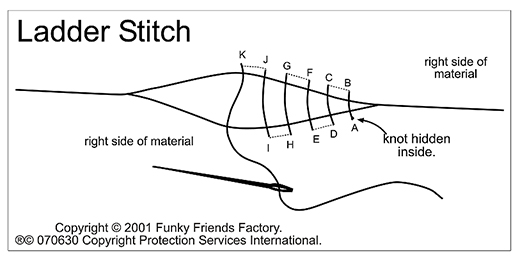I made this photo tutorial so you can see how to sew my Chicken Sewing Pattern ~> scroll down for step-by-step photos!
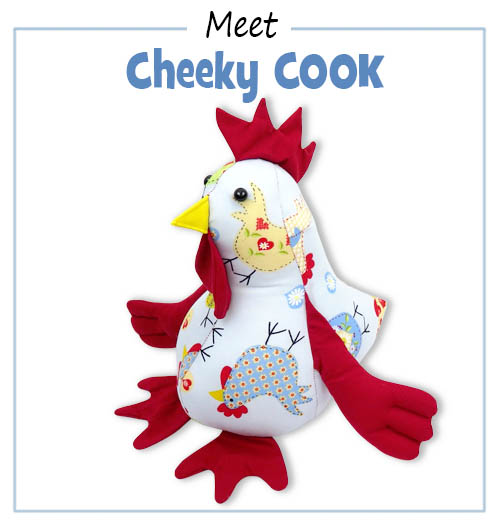
*** PLEASE NOTE – this in ONLY a PHOTO TUTORIAL ***
The FULL PATTERN IS NOT included here.
It is NOT A FREE PATTERN.I have made this photo tutorial so people who have purchased the pattern can SEE how to sew a toy chicken (I wanted to explain this so you are not disappointed if you have found this page via a search engine and not from the link in my toy sewing pattern!)
* This pattern is available to buy, from the Funky Friends Factory website as an Instant Download e-Pattern.
First choose some fabric
You can sew your chicken toy from most fabrics, non-stretch fabrics (like cotton, corduroy and quilting fabrics) as well as stretchy/knit fabrics (like fleece, velour, chenille, minky and similar fabrics).
LOOK!
You can sew a toy chicken
in any colour!
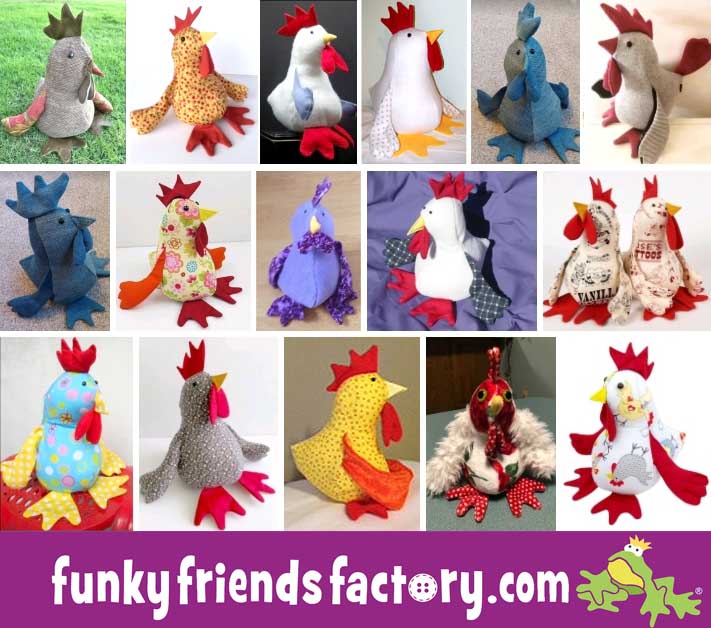
Right, let’s get sewing!
FEET:
STEP 1a
Trace the FOOT PIECES onto a double layer of fabric.
STEP 1b
Sew the FOOT PIECES together in pairs, sewing on the sewing lines, leaving the straight edge open.
STEP 2
Cut the FOOT PIECES out with a 5mm/¼inch seam allowance. Clip the seams well (especially where the seam is very curved) and turn right side out.
TIP: I like to use a wooden chopstick to help turn the seams nicely. Run the end of the stick back and forth along the stitching inside until the seam is nice and smooth.
BODY:
STEP 3
Sew the FRONT PIECES together from A to B.
STEP 4a
Pin the FEET to the FRONT PIECES using the pattern markings to guide you with the position…
STEP 4b
and sew the FEET to the FRONT PIECES with a 3 mm (⅛ inch) seam
STEP 5a
Pin the BASE PIECES to the FRONT PIECES with the FEET in between….
STEP 5b
and sew the BASE PIECES to the FRONT PIECES, sew from G – B – G.
TIP: This is what the pieces will look like from the right side – the ‘toes’ should point up to the top of the Chicken’s head.
STEP 6
Sew the BACK PIECES together from C to D, leaving the gap open for stuffing (see the black arrow in the photo below).
WINGS:
STEP 7a
Trace the WING PIECES onto the double layer of fabric.
STEP 7b
Sew the WING PIECES together on the sewing line. Cut the WINGS out with a 5mm/¼inch seam allowance (outside the sewing line). Clip the seams well, where they are very curved (especially in between the ‘fingers”).
STEP 8a
Turn the WING PIECES right sides out.
STEP 8b
Stuff a small amount of toy stuffing into each wing, just enough to give them some ‘body’ leaving the top 2-3cm (1 inch) free of toy stuffing. (This is so the wings will be nice and floppy!) Pin the wings closed along the straight edge.
TIP: If I am using a thicker fabric like fleece or Cuddle, I like to add a bit of “weight” to the wings by putting a tablespoon of plastic pellets in each wing, instead of toy stuffing, for a fun effect.
STEP 9
Pin the WINGS to the BACK PIECES, using the pattern markings to guide you, and sew them in place with a 3mm (⅛ inch) seam.
SIDE SEAMS:
STEP 10
Pin the BACK PIECES and FRONT PIECES together along the side seams, with the WINGS in between.
STEP 11
Sew the side seams from E down one side, around to D and back up the other side to E again.
COMB:
STEP 12a
Trace the COMB PIECES onto the double layer of fabric.
STEP 12b
Sew the COMB PIECES together on the sewing line. Cut the COMB out with a 5mm/¼inch seam allowance (outside the sewing line).
STEP 13
Clip the seams well (especially in between the points of the COMB). Turn the COMB PIECES right sides out.
TIP: I used a knit(stretchy) fabric so the points of the COMB PIECES will turn easily. Clip the seams really well in between the ‘points’ of the COMB before turning and use a chopstick/turning tool to make the points turn nicely.
GIBLETS:
STEP 14
Trace the GIBLET PIECE onto the double layer of fabric.
STEP 15
Sew the GIBLET PIECES together on the sewing line, leaving the straight edges open. Cut the GIBLET PIECES out with a 5mm/¼inch seam allowance (outside the dashed sewing line). Clip the seams very well and cut the ‘v’- shape out of the top of the GIBLET PIECES, as shown on the pattern markings (this creates a turning gap for turning the giblets inside out).
TIP: It is best to use a knit (stretchy) fabric – so the GIBLETS will turn easily.
STEP 16
Turn the GIBLET PIECES right sides out.
BEAK:
STEP 17
Fold the BEAK PIECE in half with the fabric wrong sides together. (Use an iron to get a neat fold). Repeat this 2 more times (ironing each time you fold) to form a triangle shape for the beak. Sew along the beak edge to give a nice neat finish.
TIP: Use a thin, fabric like cotton for the BEAK PIECE or it will be too thick to sew through all the layers!
PLACEMENT:
STEP 18a
Pin the COMB in position using the pattern markings and the CHOOK SEWING DIAGRAM to guide you. Fold the GIBLETS and place the bottom of the BEAK between the top of the GIBLETS.
STEP 18b
Pin the BEAK and GIBLETS in place on the FRONT PIECE.
STEP 18c
Sew the BEAK and GIBLETS in place on the FRONT PIECE with a 3mm (⅛ inch) seam.
FRONT SEAM:
STEP 19
Sew from E – A on the FRONT PIECES.
TIP: Don’t sew the chicken closed at the back – we need to do the EYES first!
EYES:
STEP 20
If you are using CRAFT EYES, insert them now. (If you are embroidering the EYES, do this later – after the Chook is stuffed.)
TIP: I have a tutorial to show you how to insert craft eyes on my blog.
BACK SEAM:
STEP 21
Sew from E – C on the BACK PIECES.
ASSEMBLY:
STEP 22
Turn the Chicken right side out through the stuffing gap on the BACK PIECES.
STEP 23a
Fill the head and tail area quite firmly with toy stuffing then finishing stuffing the rest of the body.
STEP 23b
If you are embroidering the EYES, do this now using black embroidery thread and a satin stitch.
TIP: If the toy is for a young child it is safer to embroider the eyes instead of craft eyes. I have a post about toy safety on my blog with more toy safety tips and guidelines.
STEP 24
Sew the stuffing gap on the BACK PIECES closed with a ladder stitch.
Your Chook is ready to LOVE!

Come join the fun on Facebook!
When you’ve made your chicken – come and post some photos of your NEW Funky Friend for me to see on my Funky Friends Factory Facebook page.
You could WIN a FREE PATTERN in the MAKER OF THE MONTH Pattern Giveaway!
I can’t wait to see the Funky Friends you sew!

bye for now,
Pauline


